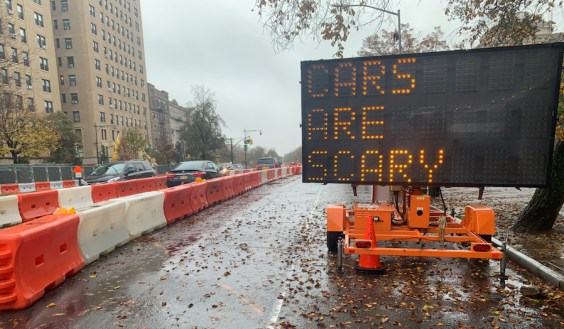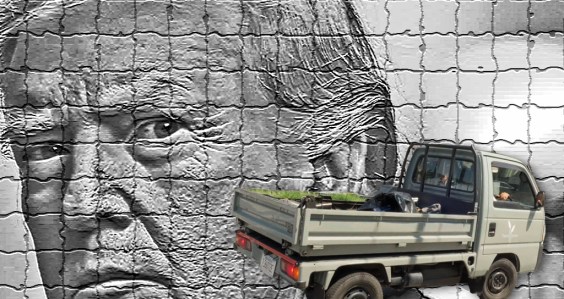 Rendering of the Transbay Terminal with one-level train box and mezzanine
Rendering of the Transbay Terminal with one-level train box and mezzanineLet's hope California rail passengers can look back on the drama
playing out between the Transbay Joint Powers Authority (TJPA) and the
California High Speed Rail Authority (CHSRA) as a small hiccup on the
way to building the nation's preeminent rail network into one of the
most impressive rail stations in the world. And for our sake, let's
hope Washington isn't paying too much attention to the infighting and
will still award California the lion's share of the $8 billion in
federal stimulus money slated for high speed rail.
What's
clear is the battle between the TJPA and CHRSA is as much about the personalities running the authorities and
their obvious distrust and dislike for each other as it is about the
engineering numbers. The impasse became
public in January, at an MTC commission meeting, when the CHRSA
projected it would need capacity at the Transbay Terminal for twelve
trains per hour, up from four trains per hour that had been cleared in
environmental review.
Supervisor Chris Daly, an MTC Commissioner and TJPA Board Member, called the announcement a "complete and total blindside" and "single A baseball."
According to TJPA spokesperson Adam
Alberti, they heard about the new numbers in a private meeting only a
few days prior. CHRSA Executive Director Mehdi Morshed said they were presented in their business plan as early as November,
2008 (PDF). Alberti said a business plan is not an operational plan, and didn't provide a rationale to
substantiate the need to run so many trains. Morshed said they had
delivered their draft operational plan to TJPA, MTC, and Caltrain
several weeks ago. Alberti called the CHRSA document a fiscal plan
that has very little in operational data, not sufficient to justify
engineering a second level to the train box.
See where this is going?
There was so little communication between the two authorities they had to create a memorandum of understanding last month that would clarify when and how they would share data. The parties beseeched Steve Heminger of the MTC to arbitrate a meeting to get everyone on the same page, a meeting that is supposed to happen later this week.
MTC Spokesperson Randy Rentschler acknowledged receiving an 11-page document from CHRSA that he characterized as "a skeletal operating plan," though he was quick to play down the politics:
We’re not concerned about who’s to blame here. There a lot of different players here who have not worked together closely. The reason we want to get these guys together is to get beyond that conversation. If the consequence is we have to open up the EIR, let’s talk aboutthat. If the consequence is we have to spend a whole bunch more moneyto build this terminal, let’s talk about that. I think that if you sit in my chair, considering how many transitoperators we have in this region, this is something that we do very often.
Caltrans Director Will Kempton is doing his part to get consensus as well. He convened a meeting yesterday of all the
agencies and authorities who would collaborate on the state's
application for federal stimulus funds to try to work out an accord.
Putting personalities aside, and assuming that MTC can broker a compromise regionally and Caltrans at a state level, there are significant deadlines that need to be met and obstacles to be resolved.
12 Trains Per Hour At Transbay
As Transbay project manager Emilio Cruz made clear at the TJPA board meeting on March 12th, their design and engineering deadlines are tight and they need to know definitively how many trains they are expected to accommodate by May to prevent cost overruns (PDF). The price tag of building a two-level train box with a mezzanine that could accommodate 12 trains per hour is $500-700 million more than their current design and would top $1
billion.
There is no disagreement on the ridership numbers for the terminal, in
large part because both the TJPA and CHSRA hired the same consultant,
Cambridge Systematics, to do the numbers (PDF). Alberti stressed that it's not their job to tell the CHRSA how to run their system, but they have been working on ridership numbers developed in the EIR and that without the operations plan, they can't know for sure that the two-level train box is necessary. He also suggested that making capital changes is far more costly than making operational changes, such as shortened turnaround times, running some trains only as far as San Jose, etc.
"We all want to think 100 years out, but we're not going to open with 100-year engineering requirements," he said. "We need a logical progression for 100 year requirements, and 2030 is a good base, as planned in the EIR." He also stressed that most European systems handle half the number of high speed trains per hour and only Tokyo sees that volume, though their densities are far higher than San Francisco will likely ever have.
An internet search can easily generate comparisons to other high speed train operators and their operating windows, and none but Tokyo's Shinkansen handles 12 trains an hour, with dwell times of less than ten minutes (PDF). Eurostar from London to Paris and Brussels is three and two trains per hour, respectively (PDF). TGV from Paris to Lyon is two trains per hour, up to ten total at peak (PDF). Transbay blog took the ridership numbers and the 12 trains per hour demand and calculated that trains would be running 12 to 43 percent full out of San Francisco, depending on the time of day.
CHRSA's Morshed insisted that the numbers in their full operational plan would bear out and that they will be picking a lot of passengers up outside of San Francisco that will drive the percentages higher. Morshed said CHRSA is working with subcontractors who helped build the TGV and that Paris has three stations that run high speed trains.
Politicians Get Involved
The San Francisco block of state legislators are rallying around the Transbay Terminal, urging CHRSA and the State Senate Transportation and Housing Committee Chair Senator Lowenthal not to waver on their commitment, which was clearly outlined in the language of Proposition 1A. "The Transbay Program is the only component of California's high-speed rail system that is environmentally cleared under both CEQA and NEPA," they assert in a letter sent yesterday (PDF).
The Committee is holding a hearing today to review CHRSA's 2009-10 budget request and a State Legislative Analysts Office (LAO) report that is fairly
critical of CHRSA's business plan, noting that it fails to meet requirements that were part of the authority's mandate (PDF). The LAO report also recommends:
- Requiring the HSRA to adopt project selection criteria.
- Requiring the HSRA to submit an annual report to the Legislature that wouldinclude an annual work plan, funding status by project segment, future contractobligations, scope, schedule and budget for each segment, assumptions used insystem planning and financing and changes from prior years, and periodicindependent financial and performance audits.
In Senator Lowenthal's opening remarks at today's hearing, he expressed concern with the CHRSA's consultant-driven structure and its budget request (full remarks, PDF):
We need to look carefully at the Authority’s request for $123 million. Would the state be better served if some of the requested funds were shifted to employing permanent staff to provide project management services? Should the Authority contract with Caltrans for these services? In the 2008 Business Plan submitted by the Authority, it included a patronage estimate of 55 million at build out, now the Authority is requesting an additional $2 million for a new patronage forecast, the third in ten years. Why is this needed? Finally, the Authority is requesting $2 million for a financial plan yet the Legislative Analyst stated that the business plan recently submitted is inadequate.
Given that US DOT Secretary Ray LaHood still considers California to be in the front seat among high speed rail projects for stimulus funding, there is time to get all the parties to agree on Transbay as the Norther California terminus and move forward within the aggressive timeline Obama has set for stimulus money.
Despite their disagreements on particulars, both Alberti and Morshed stressed that they believed a compromise could be reached.
"Hopefully, if we can get on the same page and all agencies are marching together, we can present a unified plan to Washington," said Alberti.





